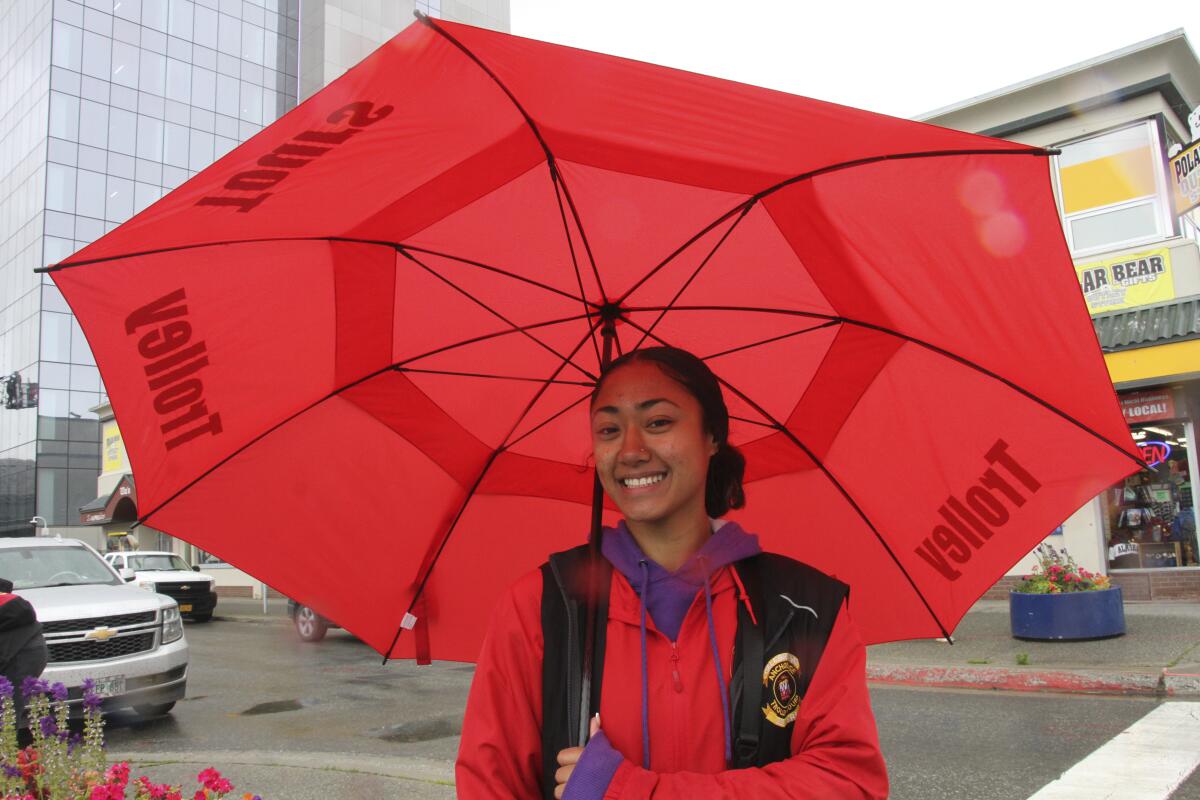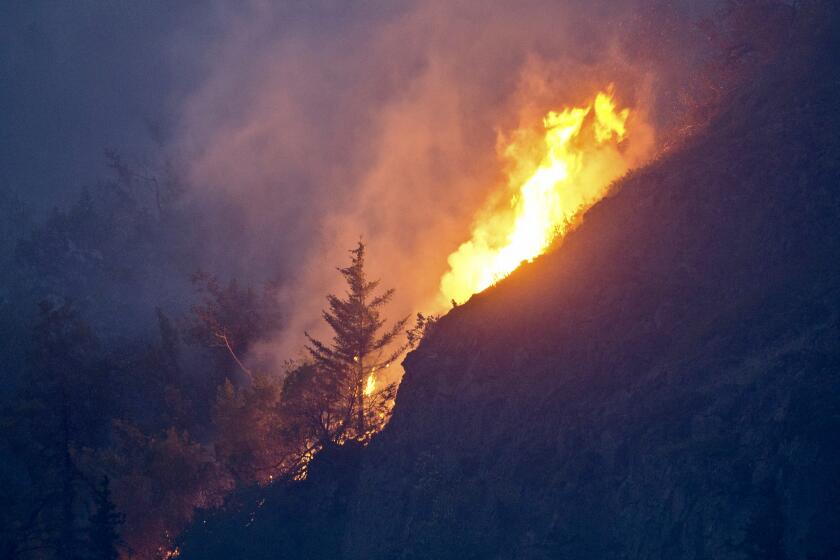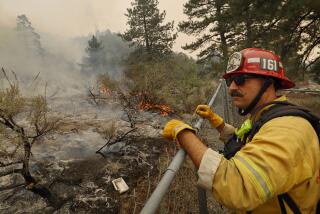Alaska’s slow start to wildfire season a relief after Connecticut-sized area burned last year

- Share via
ANCHORAGE — Alaska is off to the slowest start of a wildfire season in three decades — an immense relief after fires scorched nearly enough land to cover Connecticut last year, even threatening remote communities on the tundra.
Thanks to a cool, wet early summer, this year’s fires have burned the equivalent of just 1½ times the size of New York’s Central Park.
“If you were to kind of draw up a recipe for what would be a benign fire season in Alaska, we really have ... checked all those boxes,” said Brian Brettschneider, a National Weather Service climate scientist.
It’s a far cry from last year, when the state burned in ways rarely or never seen.
A lightning fire in southwest Alaska’s Yukon-Kuskokwim Delta, which is largely tundra, threatened two villages and their 700 residents. Another fire prompted the three-week evacuation of part of the tiny city of Anderson; its smoke blanketed Denali National Park and Preserve, one of the state’s premiere tourist spots as home to North America’s highest peak.
That fire claimed a home and several seasonal cabins. The only fatality in last year’s fires came when a pilot died in a helicopter crash while moving equipment to support firefighters.
A recent series of wildfires near Anchorage and the hottest day on record have sparked fears that a warming climate could soon mean serious, untenable blazes in urban areas
The fires consumed 4,844 square miles — slightly less than the size of Connecticut.
This season’s favorable weather is thanks to an upper-level trough of low pressure over the Bering Sea and western Alaska. It’s bringing cooler air, promoting cloud cover and drawing moisture from the Gulf of Alaska, which helps keep plants from drying out, Brettschneider said.
Firefighters hired by state and federal agencies aren’t sitting around bored, said Sam Harrel, an Alaska Division of Forestry spokesperson. The state is using federal infrastructure funding to remove fuels to prevent future fires, he said.
Alaska has also sent about 100 firefighters to help with blazes engulfing neighboring Canada.
A drawback to the conditions is that some Alaskans are missing out on what is usually a brief period of summery weather.
Eberhard Brunner of Anchorage wore a raincoat as he photographed geese at the city’s Westchester Lagoon on Thursday.
“It ... should be sunny, in the 70s,” said Brunner, 85. “If the weather keeps me home, I’ll never be able to get out.”
More than a dozen blazes sparked by lightning char spruce and tundra in the state’s interior. Hot weather is hindering fire crews.
Naomi Reupena-Tuaiao, a Honolulu native working in Anchorage while her Nebraska college is on summer break, also wishes it were warmer.
“It’s just cold,” she said from under a large umbrella, after standing outside in the rain for about seven hours, directing tourists to a trolley. Her shoes were wet and she was wearing two jackets.
The temperature in Anchorage has gone above 70 degrees only once this year.
Though conditions favor a mild fire season, Brettschneider said they could quickly change.
It’s still about 10 days until the historical peak for the state’s lightning season — last year, 61,000 lightning strikes were recorded July 5-11 — and it takes only a few days of sunny, breezy, dry weather to provide fuel for wildfires.
“Things can change on a dime,” he said.
Alaska’s fire season generally concludes at the end of August.
More to Read
Sign up for Essential California
The most important California stories and recommendations in your inbox every morning.
You may occasionally receive promotional content from the Los Angeles Times.














